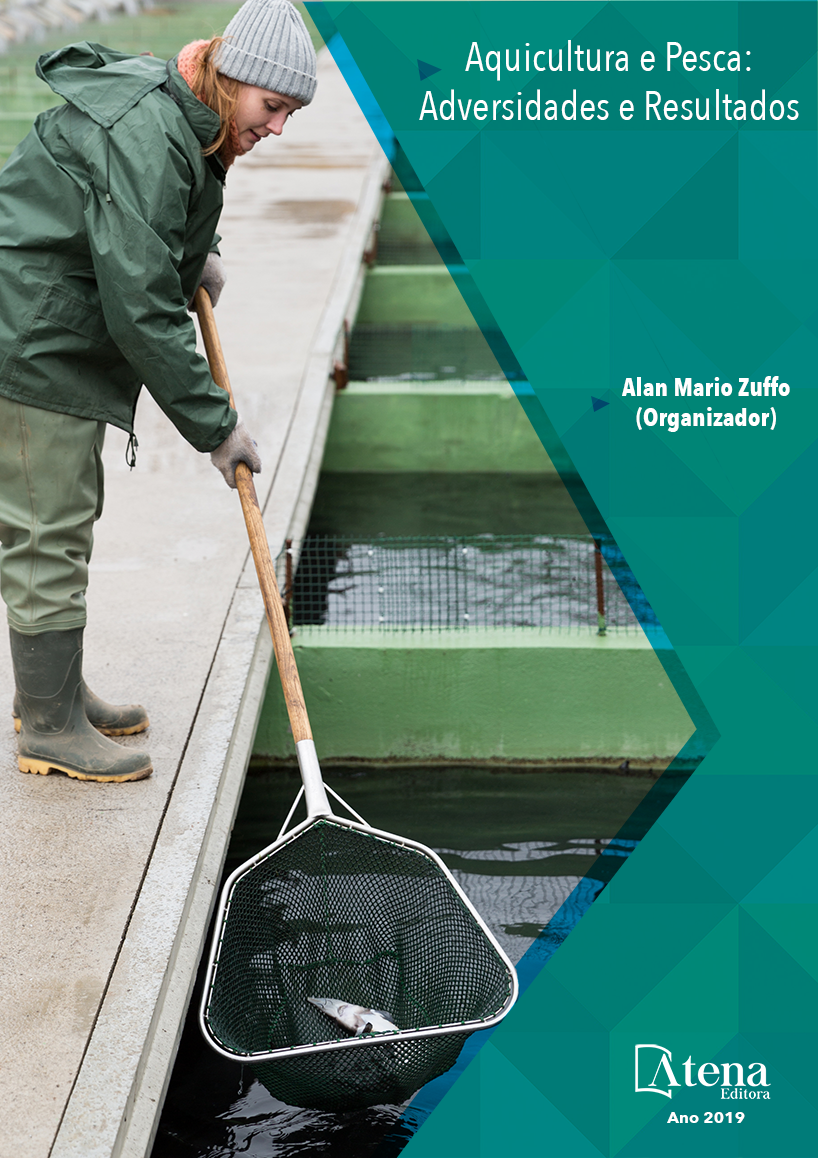
RECUPERAÇÃO DE LARVAS Nodipecten nodosus (L. 1758) TRANSPORTADAS EM DIFERENTES TEMPERATURAS E EMBALAGENS
Os produtores de vieiras do
litoral norte de Santa Catarina apresentam
dificuldades no método de transporte de
indivíduos jovens para as suas áreas de cultivo.
Na expectativa de mitigar este problema,
o trabalho teve como objetivo avaliar a
recuperação de larvas N. nodosus, utilizando
diferentes formas de transporte (úmido e
submerso em água) em temperatura ambiente e
refrigerada. As larvas pediveliger reproduzidas
no Laboratório de Moluscos Marinhos (LMM)
da UFSC, Florianópolis, foram transportadas
para a o Laboratório do Centro Experimental de
Maricultura (CEMar) da UNIVALI, Penha, SC.
Parte destas em garrafas de politereftalato de
etileno de 500 mL, preenchidas com água do
mar (36 psu), (TRATAMENTO SUBMERSO)
e embaladas em uma tela de poliamida com
100 micrometros de abertura cobertos com
toalhas de papel umedecidas em água marinha
(TRATAMENTO ÚMIDO). Destas unidades, 5
réplicas de cada tratamento foram condicionadas
em caixas de isopor em temperatura ambiente e
outras 5 em bolsas térmicas em gel congelante.
O delineamento experimental foi inteiramente
ao acaso em esquema bi fatorial. Após a
exposição aos tratamentos de transporte não
foi possível observar diferença estatística
(P>0,05) para a recuperação final das larvas.
Portanto, recomenda-se de modo prático, que
o transporte de larvas pediveliger seja realizado
submersas em água marinha e em temperatura
ambiente (23,5 ±1,2 ºC), tornando-se viável aos
produtores.
RECUPERAÇÃO DE LARVAS Nodipecten nodosus (L. 1758) TRANSPORTADAS EM DIFERENTES TEMPERATURAS E EMBALAGENS
-
DOI: 10.22533/at.ed.27219290316
-
Palavras-chave: Cultivo de moluscos; vieiras; transporte; temperatura; recuperação.
-
Keywords: Mollusc farming; scallops; transport; temperature; recovery.
-
Abstract:
Scallop producers from the northern coast of Santa Catarina have
difficulties in the method of transporting young individuals to their growing areas. In
the hope of mitigating this problem, the objective of this work was to evaluate the
recovery of N. nodosus larvae using different forms of transport (wet and submerged in
water) at room temperature and refrigerated. The pediveliger larvae reproduced in the
Laboratory of Marine Molluscs (LMM) of the UFSC, Florianópolis, were transported to
the Laboratory of the Experimental Center of Mariculture (CEMar) of UNIVALI, Penha,
SC. Part of them in polyethylene terephthalate bottles of 500 mL, filled with sea water (36
psu), and packed in a polyamide screen with 100 micrometres of opening covered with
paper towels moistened in marine water (TREATMENT ). Of these units, 5 replicates of
each treatment were conditioned in polystyrene boxes at room temperature and another
5 in freezing gel thermal bags. The experimental design was completely randomized in
a bi factorial scheme. After exposure to the transport treatments it was not possible to
observe statistical difference (P> 0.05) for the final recovery of the larvae. Therefore, it
is recommended, in a practical way, that the transport of pediveliger larvae be carried
out submerged in sea water and at room temperature (23.5 ± 1.2 ºC), making it viable
to producers.
-
Número de páginas: 15
- Gilberto Caetano Manzoni
- Francisco Carlos da Silva
- Carlos Henrique Araújo de Miranda Gomes
- Claudio Manoel Rodrigues de Melo
- Robson Cardoso da Costa


